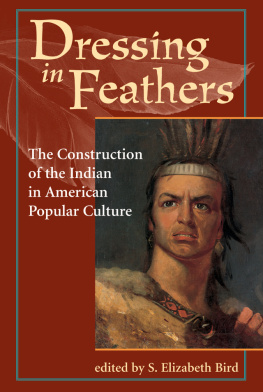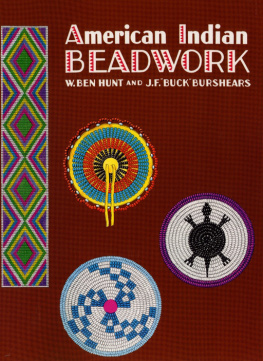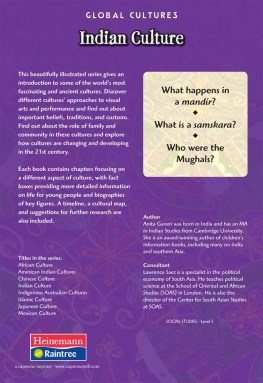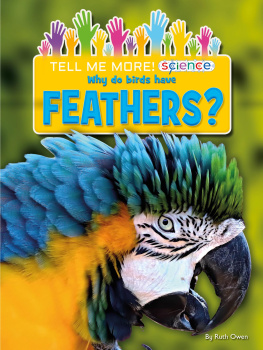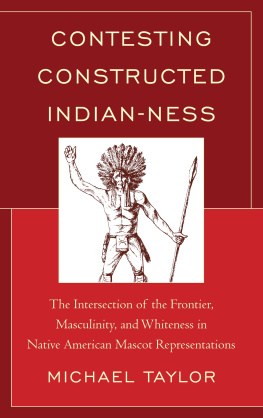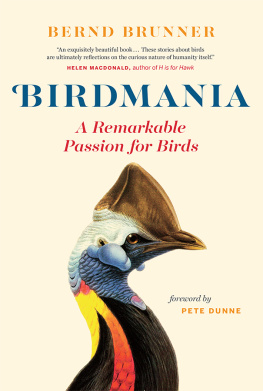Dressing in Feathers
Dressing in Feathers
The Construction of the Indian in American Popular Culture
edited by
S. Elizabeth Bird
First published 1996 by Westview Press
Published 2018 by Routledge
711 Third Avenue, New York, NY 10017, USA
2 Park Square, Milton Park, Abingdon, Oxon OX14 4RN
Routledge is an imprint of the Taylor & Francis Group, an informa business
Copyright 1996 Taylor & Francis
All rights reserved. No part of this book may be reprinted or reproduced or utilised in any form or by any electronic, mechanical, or other means, now known or hereafter invented, including photocopying and recording, or in any information storage or retrieval system, without permission in writing from the publishers.
Notice:
Product or corporate names may be trademarks or registered trademarks, and are used only for identification and explanation without intent to infringe.
Library of Congress Cataloging-in-Publication Data
Dressing in feathers: the construction of the Indian in American
popular culture / edited by S. Elizabeth Bird.
p. cm.
Includes bibliographical references and index.
ISBN 0-8133-2666-4 (hc) ISBN 0-8133-2667-2 (pb)
1. Indians in popular cultureUnited States. I. Bird, S.
Elizabeth
E98.P99D72 1996
305.897dc20 96-4555
CIP
ISBN 13: 978-0-8133-2667-2 (pbk)
For my sons, Thomas and Daniel Tobin
Contents
S. Elizabeth Bird
Sally L. Jones
Frank Goodyear
Jeffrey Steele
Peter Geller
Alison Griffiths
John Bloom
Bonnie Duran
Joel W. Martin
Jay Mechling
C. Richard King
Cynthia-Lou Coleman
Robert Baird
Peter van Lent
Annette M. Taylor
S. Elizabeth Bird
Theodore S. Jojola
Debra L. Merskin
Guide
Any edited collection is dependent on the quality and commitment of its contributors. I wish to thank all sixteen writers who contributed to this volume, not only for their fine scholarship but also for their prompt attention to suggestions and deadlines and for many helpful comments about the book as a whole.
I also appreciate the day-to-day friendship and support of my colleagues in anthropology and humanities at the University of Minnesota, Duluth, especially Eve Browning Cole, David Smith, Tom Bacig, and Fred Schroeder. Terrie Gimpel, office assistant in the Department of Interdisciplinary Programs, has been an invaluable help in typing sections of the manuscript and organizing the bibliography Graduate assistant David Woodward also helped assemble the bibliography and undertook many other tasks, such as checking references and setting up the interview schedule for my field study.
Gordon Massman at Westview Press has been friendly, helpful, and encouraging throughout the writing and editing process. I am especially grateful to Michele Wynn for her meticulous and sensitive copyediting of the manuscript.
I would like to thank the students at the University of Minnesota, Duluth, who participated in my focus group research, as well as the College of Liberal Arts for partial funding of the focus group project. In particular, I thank the American Indian participants, not only for their contribution to my own chapter, but also for helping me formulate and think through many of the issues raised by the entire project. Thank you, Jerry Ojibway, Kim King, Mike Munnell, Ty Juoni, Bill Howes, Bev Clark, Tom Drumbeater, Ardene White, and Paul Ojanen.
Finally, I thank my husband, Graham Tobin, for his love, support, and patience throughout the creation of this book.
S . Elizabeth Bird
1
Introduction: Constructing the Indian, 1830s1990s
S. Elizabeth Bird
When Walt Disney's animated film Pocahontas opened in June 1995, it was greeted by a barrage of contradictory reactions. Although most movie critics agreed that the animation was superb and some liked the story, too, the main focus of academic discussion was on the way the movie portrayed American Indians in general and the historical Pocahontas, in particular.
Although American Indian activist Russell Means lauded the film as "the single finest work ever done on American Indians by Hollywood"
No one could deny that Pocahontas bears little relationship to history. The voluptuous, dark-skinned beauty and her blond, square-jawed suitor, both appearing to be in their twenties, are a far cry from the (probably) twelve-year-old Pocahontas and (probably) forty-two-year-old Captain John Smith. It seems fairly certain that whatever happened between them did not include falling in love. Possible relationships between Smith and Pocahontas range from slight acquaintance, with Pocahontas perhaps rescuing Smith, to the scenario that the NatChat members and others suggest, in which the middle-aged Smith raped the preteen Pocahontas.
In all the debate about what "really" happened between Pocahontas and Smith, what seems to be forgotten is that we will likely never know the truth. The entire narrative is built around one or two brief episodes in Smith's writings, and none of those events may have happened at all. The revisionist interpretation of Smith as a rapist may or may not be trueit is essentially just another piece of (counter) mythmaking.
The Mythical Indian
Mythmaking is what the story of Pocahontas is all about. The Disney version comes after two centuries or more of narrative construction, during which Pocahontas became a multifaceted symbol for the White United States, As Robert Tilton demonstrates, the story "had become by mid-[nineteenth] century so pervasive in American culture that no appeal to the historical record could have had any serious effect."
The point here is that the Pocahontas story, like other national myths about Indians who helped Whites, such as Squanto and Massasoit, are White, mainstream myths.
What tied the stories of these virtuous Indians together was that for such figures to be seen in this light they generally had to act against the best interests of their own people ... This elevation saw the actual histories of these figures replaced by mythic narratives depicting the crucial moments when aid was given to the whites, such as the first Thanksgiving dinner in New England and the saving of John Smith.
Thus, these stories, at a mythic level, explain to Whites their right to be here and help deal with lingering guilt about the displacement of the Native inhabitantsafter all, the "good" Indians helped us out and recognized the inevitability of White conquest.
And that is the essential "cruelty" that the NatChat members saw in Pocahontas. As Tilton points out, it would be, to say the least, "extremely problematic" to pre It is clear whose dreams and nightmares Strong is referring to in this construction.
Pocahontas, then, is the latest incarnation of what Robert Berkhofer, Jr., calls "the White Man's Indian." In his now classic analysis, Berkhofer points out that "the essence of the White image of the Indian has been the definition of Native Americans in fact and fancy as a separate and single other. Whether evaluated as noble or ignoble, whether seen as exotic or downgraded, the Indian as an image was always alien to the White."
This book is about the fabrication of the Indian by White culture, and the essays included here are presented in the hope that by understanding this myth-making process more clearly, we can think of ways to counter and transform it. We will see that although changes have occurred and some of the more grossly distorted imagery has been superseded, there are many elements in the fabrication of the Indian that have remained consistent. As Strong points out, for example, "the animated Pocahontas is necessarily located within the entire colonial tradition of noble savagism: the natural virtues, cultural critique, and self-sacrifice she embodies are those found in Montaigne and Rousseau and Cooper and Kirkpatrick Sale."


